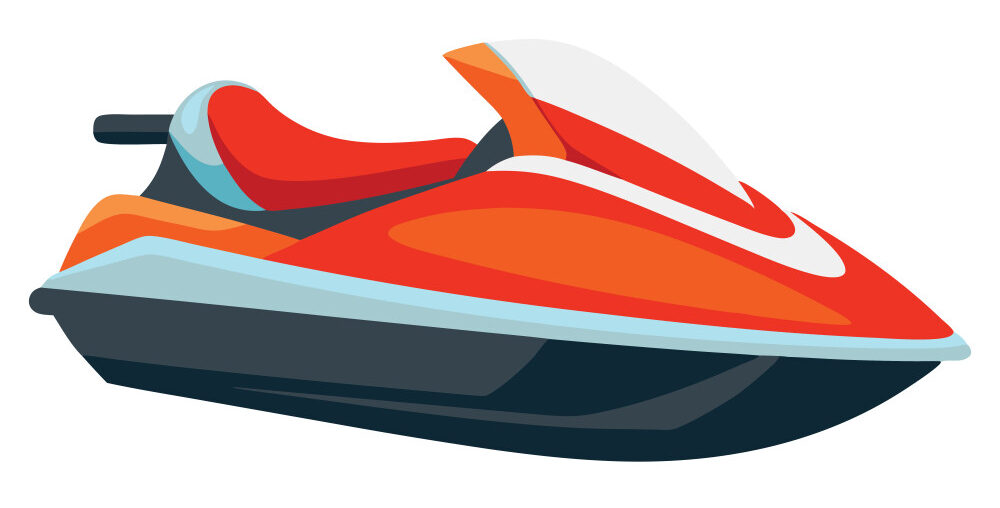Call: 1-800-832-7191
Operating Personal Watercrafts

Ride Smart & Safe: Tips for Operating Personal Watercrafts
Operating Personal Watercrafts (PWCs), such as Jet Skis, Sea-Doos, and WaveRunners, offers thrilling adventures on the water. But with great speed comes great responsibility. Whether you’re a first-time rider or a seasoned enthusiast, safety should always be your top priority. Here’s a comprehensive guide to help you ride smart and stay safe.
Know Your Craft
Before hitting the water, it’s essential to familiarize yourself with your PWC. Start by reading the owner’s manual to understand the controls, features, and maintenance requirements. Make sure your safety equipment is onboard, including a whistle, fire extinguisher, and engine shut-off lanyard (kill switch). Always inspect your PWC for fuel levels, oil, and any visible damage before launching.
Take a Boating Safety Course and understand the Navigation Rules (The “Rules of the Road”)
Many states require PWC operators to complete a boating safety course. In Connecticut, the PWC endorsement is included in the Safe Boating Certificate. These courses cover essential topics like navigation rules, emergency procedures, and environmental regulations.
Just like cars follow traffic laws, boats and PWCs must follow navigation rules to avoid collisions and ensure orderly movement on the water. You’ll learn about right of way in different scenarios, how to read buoys, markers, and lights, and how to safely pass or cross paths with other vessels. Sound signals are also covered, such as using horn blasts to communicate intentions.
Emergency Procedures
Being prepared for emergencies can save lives. Courses teach you how to retrieve someone who has fallen into the water, what to do if your PWC capsizes or takes on water, and how to use a marine fire extinguisher. You’ll also learn how to use visual and audio distress signals and basic first aid steps for common injuries.
Wear the Right Gear
Safety gear is non-negotiable. Always wear a U.S. Coast Guard-approved life jacket (Type III or better). Protective clothing like wetsuits or rash guards can help prevent injuries, while proper footwear helps avoid slipping. Gloves and goggles improve grip and visibility.
Follow the Rules of the Water: Stay Alert and Sober
PWCs are fast and agile, but they must follow the same rules as boats. Keep a safe distance from swimmers, other vessels, and shorelines. Obey speed limits and no-wake zones. Yield the right of way to larger vessels and those restricted in their ability to maneuver.
Avoid alcohol and drugs, as they impair judgment and reaction time. Stay aware of your surroundings, including weather conditions, waves, and other boaters. If you’re towing someone on a tube or wakeboard, always use a spotter.
Plan Ahead
Check the weather forecast before heading out. Let someone know your plans and expected return time. Bring a waterproof phone case or marine radio for emergencies to stay connected if something goes wrong.
Respect the Environment & Environmental Regulations
Avoid shallow areas to protect marine life and your PWC. Don’t litter—bring a trash bag or container to keep the water clean. Use eco-friendly fuel and oil whenever possible to reduce your environmental impact.
Protecting the waterways is a shared responsibility. You’ll learn about no-discharge zones where releasing fuel, oil, or waste is prohibited, how to avoid disturbing marine life, and the importance of wake awareness. Courses also cover how to clean your PWC to prevent the spread of invasive species. Always check your local laws and consider taking a certified course through the National Association of State Boating Law Administrators (NASBLA).
Final Thoughts
Operating a PWC is a blast, but safety should always come first. By following these tips, you’ll not only protect yourself and others but also ensure that our waterways remain enjoyable for everyone. Ride safe, ride smart, and enjoy the waves! Please check out our other blogs on our Boaters Blog Page. Also, here is the NASBLA MODEL ACT FOR PERSONAL WATERCRAFT
